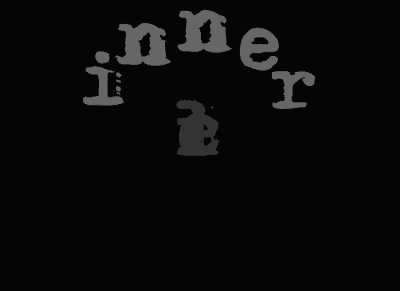 Sarah Glaz - Photo by Jessica Tommaselli
Sarah Glaz - Photo by Jessica Tommaselli
I am a little late getting this out however; there is a nice interview of Sarah Glaz who co-edited with JoAnne Growney “Strange Attractors” a collection of mathematical love poems inside the April issue of “Advance”, which is a newsletter at the University of Connecticut. Most of the work in the book is traditional poetry however; Bob Grumman and I had works in the book that are of the “equational” genre. below is the interview however check it out at the source with this link.
Mathematics and love coupled in professor's book of poetry
by Sherry Fisher- April 13, 2009
Mathematics and poetry are two of Sarah Glaz’s passions. They are melded together in her new book, Strange Attractors, Poems of Love and Mathematics.
The book, published by A K Peters Ltd., is an anthology of about 150 poems that are strongly connected to mathematics in form, content, or imagery, says Glaz, a professor of mathematics in the College of Liberal Arts and Sciences.
The collection includes poetry from all around the world, some in translation, and spans about 3,000 years. In addition to works by noted poets and scientists, the book also contains several by Glaz.
Love is the common theme of the poems in Strange Attractors. The first chapter focuses on romantic love between two people, while the poems in the second chapter are about love of family, nature, and life, and spiritual love. The last chapter centers on love for mathematics and mathematicians.
The book is co-edited by mathematician JoAnne Growney.
Glaz, whose mother read poetry to her as a child, says she started enjoying poetry before she even knew how to count.
“I’ve been fascinated with it all my life,” she says. “I’ve been collecting poems with mathematical connections for as long as I can remember.”
Glaz and Growney came to write the book after several years of e-mail correspondence. Their relationship began when Glaz found a chapbook – a pocket-sized booklet – of poetry with a mathematical theme that Growney had published.
“I contacted her and we corresponded via e-mail for several years before deciding to write the book together,” Glaz says. “We met for the first time this January at a mathematics conference, where we celebrated the book’s publication.”
Glaz says finding poetry for the book was easy: “Both of us had large collections of poems with links to mathematics. Choosing the poems was the bigger problem.”
Many poets use mathematical language to express love, Glaz says. “I think that any strong emotion makes you feel you don’t have enough words to express it. Searching for new ways of expression leads some poets to the language of mathematics.”
In a poem from “Five Poems about Zero,” Eryk Salvaggio writes about losing love:
Zero is a number
of yearning.
In your absence,
I have nothing.
But it’s mine.
“Sacrifice and Bliss,” a poem by Kaz Maslanka, is in the form of a mathematical equation. “The equation-poem involves the mathematical notion of a limit,” Glaz explains.
“It can be ‘translated’ into words by saying that the relation between ego and love in a relationship is inversely proportional. As egos approach zero, love grows to infinity.”
Glaz says the book also contains a few “humorous, geeky” poems.
Katharine O’Brien writes in her poem “Valentine”:
You disintegrate my differential,
you dislocate my focus.
My pulse goes up like an
exponential
whenever you cross my locus.
Glaz, who wrote a poem called “Calculus,” says her poem is about the passionate, early history of calculus.
“It’s something I tell my students when I teach them calculus – the story of Newton versus Leibniz,” she says.
Mathematics is much like art, Glaz says: “I love to teach and I love doing research in mathematics. I think that proving a theorem and writing a poem come from the same place. You need to create, to discover, to look for a truth, to look for a pattern, and then enjoy it when it appears, and, of course, share it with students.”
Glaz is author and editor of several books and many articles in an area of mathematics called commutative algebra.
“Mathematics publications are for the initiated,” she says.
“They are read by the few hundred people around the world who work in the same research area.”
Strange Attractors, on the other hand, is an interdisciplinary work touching on mathematics, poetry, and history. In addition to the collection of poems, it includes bibliographical information for further exploration of the links between mathematics and poetry, and biographical information on the contributors and on the mathematicians appearing in the poems.
“It was exhilarating to work on such a project,” Glaz says.
“I hope the book brings poetry to mathematicians and some love of mathematics to poets. I hope people from many disciplines enjoy it.”
For more information about the book, and a sample of poems, Glaz invites you to visit her web page.
April is National Poetry Month and Mathematics Awareness Month.




















































